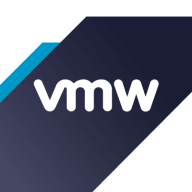


VMware VeloCloud SD-WAN and Axis Security compete in the SD-WAN and security product category. Axis Security has the upper hand due to its comprehensive security features and integration, despite VMware's competitive pricing and support advantages.
Features: VMware VeloCloud SD-WAN is known for robust connectivity solutions, reliable network performance, and straightforward deployment. Axis Security offers advanced security features, integrated risk assessment, and comprehensive threat detection tools.
Room for Improvement: VMware VeloCloud SD-WAN can improve on analytics capabilities, configuration processes, and integration options. Axis Security requires enhanced integration with existing systems, simplified deployment processes, and broader support for third-party applications.
Ease of Deployment and Customer Service: VMware VeloCloud SD-WAN is appreciated for its straightforward deployment model and responsive customer service. Axis Security has a more complex deployment process but provides robust support that is highly regarded by users.
Pricing and ROI: VMware VeloCloud SD-WAN is cost-effective, offering a setup that quickly supports a positive ROI. Axis Security pricing is considered high, but the investment is seen as justified by the security features' quality, leading to a favorable ROI over time.



iboss offers a comprehensive security platform designed for diverse use cases such as web filtering, data loss protection, corporate proxy services, and URL filtering.
iboss integrates advanced features to address dynamic security needs, leveraging its strength in SASE, ZTNA, AI initiatives, and cloud integration, while ensuring seamless operations for remote work. It excels in historical forensics, malware protection, and flexible cloud deployments. Users benefit from comprehensive traffic scanning, robust malware detection, and PaaS capabilities that reduce hardware management. An intuitive admin console ensures efficient management with content filtering and low false positives. SSL decryption enhances security, while DLP protects data in AI conversations. Deployment is rapid and scalable, allowing effortless integration with emerging technologies.
What features does iboss offer?
What benefits and ROI should users consider?
iboss finds significant application in sectors such as education, where web filtering for K-12 is crucial, and in corporate environments requiring robust proxy services and URL filtering for network security. Its adaptability is essential in scenarios demanding flexible, decentralized security frameworks, particularly for remote work setups.
Axis Security is a prominent enterprise security solution, specializing in Zero Trust Network Access (ZTNA). The Axis Security Application Access Cloud platform is designed to secure remote access to applications and services hosted in the cloud or on-premises. It aims to simplify and enhance access controls while maintaining strong security measures.
Axis Security's platform stands out by offering a comprehensive, cloud-native solution designed to enable secure access to private applications. Their Application Access Cloud simplifies network security, eliminating the need for traditional VPNs, and provides a more secure and efficient way to connect users to private applications, regardless of where the users or the applications are located.
Axis Security users on PeerSpot have highlighted the ease of deployment and the non-intrusive nature of Axis Security's solution as major advantages. One IT Director noted, "The implementation was straightforward and didn’t disrupt our existing operations, which was a major plus." Another user, a Security Manager, praised the platform's robust security features, saying, "Axis Security has significantly enhanced our ability to control and monitor application access, giving us peace of mind in our security operations."
Axis Security follows the principles of zero-trust architecture, which means it treats every access request as potentially untrusted, regardless of the user's location or network. It applies rigorous authentication and authorization controls to ensure only authorized users can access specific applications and resources. Axis Security enables secure remote access to applications and services without requiring a VPN (Virtual Private Network). It establishes a secure connection between users and applications, protecting against potential threats and reducing the attack surface.
With Axis Security, organizations can granularly control user access to specific applications or services. This ensures that users only have access to the resources they need, reducing the risk of unauthorized access or data breaches. The platform simplifies access management by providing a centralized control point for managing user access policies. IT administrators can define access rules based on user roles, groups, or other criteria, making it easier to enforce security policies and maintain compliance.
Axis Security continuously monitors user activity and application access, detecting potential threats and anomalies in real-time. It provides insights into user behavior, allowing organizations to identify and mitigate security risks promptly.
Axis Security is built on a cloud-native architecture, allowing it to scale and adapt to dynamic cloud environments. It can seamlessly integrate with various cloud services and supports hybrid deployments, making it suitable for organizations with diverse infrastructure setups.
Axis Security aims to provide secure and simplified remote access to applications while adhering to the principles of zero trust. By implementing granular access controls and continuous monitoring, it helps organizations protect their critical resources and reduce the risk of unauthorized access or data breaches.
VMware Software-Defined Wide Area Network (SD-WAN) is a secure access service edge (SASE) platform that combines many types of software-based network technologies in an attempt to enable users to virtualize their wide area networks and reduce their reliance on hardware. In essence, this solution makes it possible for users to reliably access their applications from anywhere in the world by leveraging cloud technologies. Users can simply, efficiently, and completely control their network devices and traffic. It ensures that organizations are always able to use the best possible connection to their data centers. VMware SD-WAN steers traffic so that it is always using the most reliable connections and at the same time takes steps to remediate any problems that it detects in other network links. This guarantees that organizations can access high-priority applications at all times.
VMware SD-WAN Benefits
Some of the ways that organizations can benefit by deploying VMware SD-WAN include:
VMware SD-WAN Features
Reviews from Real Users
VMware SD-WAN is a solution that stands out when compared to many of its competitors. Two major advantages it offers are its ability to automate the process of creating and maintaining a virtual local area network and its intuitive user dashboard.
Sami I., principal cloud architect at Loihe, writes, “One of the solution's most valuable features is the VMware core automation stack at an SDDC. It includes NSX, the VMware virtualization layer for the networks (the LAN virtualization), which works extremely well with the VMware SD-WAN solution and is the primary advantage over all the others. None of the other vendors could integrate with the virtual LAN, making it quite complicated and virtualized to be fully automated.”
Chih S., senior technical consultant at a tech services company, says, “The product has a very good user dashboard that is simple to navigate.”
We monitor all Secure Access Service Edge (SASE) reviews to prevent fraudulent reviews and keep review quality high. We do not post reviews by company employees or direct competitors. We validate each review for authenticity via cross-reference with LinkedIn, and personal follow-up with the reviewer when necessary.